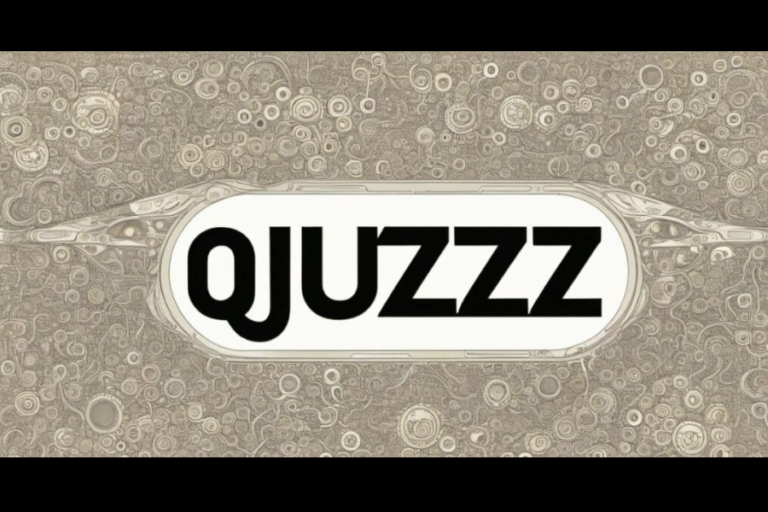Recorded as a Show: A Comprehensive Overview
Introduction
The expression “recorded as a show” exemplifies the change of live exhibitions, occasions, and unique programming into recorded designs for broadcast, streaming, and filing. This cycle has altered media outlets, offering crowds overall admittance to different substances whenever the timing is ideal. This article investigates the authentic turn of events, mechanical headways, and social effect of recorded shows, while additionally considering the future ramifications of this consistently advancing medium.
Historical Development
Early Beginnings
The idea of recording shows started with the approach of sound keep advancements in the late nineteenth 100 years. Thomas Edison’s development of the phonograph in 1877 denoted the primary significant forward leap, permitting sounds to be recorded and played back. This innovation laid the basis for future advancements in recording and broadcasting.
Rise of Radio and Television
The mid twentieth century saw the ascent of radio, where live exhibitions were communicated to homes the country over. With the presentation of attractive tape during the 1930s, it became conceivable to record these transmissions for later playback. The progress from live public broadcasts to recorded designs considered more noteworthy adaptability and better creations.
TV arose as a prevailing medium during the twentieth hundred years, further promoting the idea of recorded as a show. The capacity to record and replay TV programs upset the business, prompting the making of notorious shows that could be partnered and seen more than once. Shows like “I Love Lucy” were among quick to be recorded and disseminated generally, starting a trend for future TV programming.
Digital Revolution
The late twentieth and mid 21st hundreds of years saw the advanced unrest, which radically changed how shows were recorded, conveyed, and consumed. The progress from simple to advanced recording worked on the quality and sturdiness of recorded content. The presentation of computerized video recorders (DVRs) in the last part of the 1990s permitted watchers to record live transmissions and watch them whenever the timing is ideal, a critical shift from conventional arrangement seeing.
Technological Advancements
High-Definition and Beyond
The shift from standard definition to top quality (HD) TV in the mid 2000s denoted a huge jump in recording innovation. HD gave a much more clear and more definite picture, improving the watcher’s insight. Today, 4K and, surprisingly, 8K goals are becoming the norm, offering uncommon degrees of detail and drenching.
Streaming and On-Demand Services
The ascent of the web and broadband availability empowered the multiplication of real time features. Stages like Netflix, Hulu, and Amazon Prime Video have gained by recording shows, offering huge libraries of content that can be gotten to on-request. This shift has changed how shows are appropriated as well as how they are created, with many administrations putting resources into unique substance that is solely accessible on their foundation.
Cloud Technology and Remote Production
Cloud innovation has additionally changed the recording and creation of shows. It considers the capacity and gushing of a lot of information, empowering consistent admittance to content from anyplace on the planet. Furthermore, headways in distant creation advances have made it conceivable to deliver and communicate shows from essentially any area, diminishing the requirement for conventional studio settings.
Cultural Impact
Global Accessibility
One of the main effects of being recorded as a show is the worldwide openness it gives. Crowds from various regions of the planet can get to a similar substance, cultivating a common social encounter. Shows like “Companions” and “Round of Privileged positions” have accomplished worldwide acknowledgment, affecting societies and making widespread perspectives.
Shifts in Viewing Habits
The capacity to record and stream shows has altogether moved review propensities. Marathon watching, where watchers consume numerous episodes or whole seasons at a time, has turned into a typical practice. This pattern has affected how shows are composed and delivered, with numerous makers settling on serialized narrating that empowers delayed survey meetings.
Preservation of Cultural Heritage
Recording shows fill in for the purpose of saving social legacy. Authentic transmissions, famous exhibitions, and huge occasions are documented for people in the future. This safeguard guarantees that significant social achievements are not lost to time and can be returned to and concentrated by antiquarians and fans the same.
Economic Implications
Revenue Models
The change to recorded as a show has presented new income models in media outlets. Publicizing, membership administrations, and pay-per-view models have become predominant. Web-based features, specifically, have made a rewarding business sector, with organizations like Netflix putting billions in unique substance to draw in and hold supporters.
Job Creation and Industry Growth
The interest for recorded content has prompted huge work creation and industry development. Essayists, chiefs, makers, and a large group of different experts are utilized in the production of recorded shows. Moreover, the ascent of real time features has prodded interest in innovation and framework, further helping the economy.
Challenges and Considerations
Piracy and Copyright Issues
One of the significant difficulties confronting the business is robbery. The simplicity of copying and appropriating advanced content has prompted far and wide unapproved sharing of recorded shows. This issue has provoked the execution of rigid intellectual property regulations and computerized privileges the executives (DRM) advancements to safeguard licensed innovation.
Quality vs. Quantity
The flood in recorded content has raised worries about quality. The strain to deliver a consistent stream of new happiness can at times prompt an emphasis on amount over quality. While there are some excellent creations, the sheer volume of accessible substance can make it challenging for customers to perceive the best contributions.
Technological Barriers
Notwithstanding the progressions in innovation, there are still obstructions to getting to recorded shows. High velocity web is an essential for streaming top quality substance, and not all districts have dependable networks. This advanced gap can restrict the openness of shows in specific regions.
The Future of Recorded Shows
Interactive and Immersive Experiences
The fate of recording as a show is probably going to be formed by headways in intelligent and vivid advances. Computer generated reality (VR) and expanded reality (AR) are ready to change the review insight, offering more intelligent and vivid ways of drawing in with content. These innovations can make a more customized and connected experience for watchers.
Artificial Intelligence and Personalization
Man-made consciousness (simulated intelligence) is set to assume a critical part in store for recorded shows. Simulated intelligence calculations can examine watcher inclinations and conduct to suggest customized content. This personalization can improve the review insight, making it simpler for crowds to find shows that line up with their inclinations.
Sustainability and Eco-Friendly Practices
As the business develops, there is a developing accentuation on supportability and eco-accommodating practices. Lessening the carbon impression of creations, using environmentally friendly power sources, and advancing manageable practices in happy creation are becoming significant contemplations. The business is progressively searching for ways of offsetting development with natural obligation.
Conclusion
The development of recorded as a show significantly affects media outlets and society at large. From the beginning of radio and TV to the computerized insurgency and the ascent of web-based features, recorded shows have changed how we consume content. Innovative progressions keep on pushing the limits of what is conceivable, while social and financial effects highlight the significance of this medium. As we plan ahead, the continuous improvements in intuitive advancements, artificial intelligence, and supportability vow to shape the following section in the narrative of recorded shows.
Facts
Historical Milestone: Thomas Edison invented the phonograph in 1877, marking the beginning of recorded audio.
Early Broadcasting: Radio became a popular medium in the early 20th century, with the introduction of magnetic tape in the 1930s enabling the recording of broadcasts.
Television Revolution: The mid-20th century saw television emerge as a dominant medium, with shows like “I Love Lucy” being among the first widely recorded and distributed programs.
Digital Transition: The late 20th century witnessed a shift from analog to digital recording, significantly enhancing the quality and durability of recorded content.
HD and Beyond: The early 2000s marked the transition to high-definition (HD) television, followed by the advent of 4K and 8K resolutions.
Streaming Era: The rise of internet and broadband connectivity led to the proliferation of streaming services like Netflix, Hulu, and Amazon Prime Video.
Global Reach: Recorded shows offer global accessibility, enabling audiences worldwide to access the same content.
Cultural Impact: Iconic shows like “Friends” and “Game of Thrones” have achieved global recognition and influenced cultures around the world.
Economic Growth: The demand for recorded content has spurred job creation, technological investment, and new revenue models in the entertainment industry.
Future Trends: Advancements in VR, AR, AI, and sustainability practices are expected to shape the future of recorded shows.
Summary
“Recorded as a Show” refers to the transformation of live performances and original programming into recorded formats for broadcast, streaming, and archiving. This evolution began with Thomas Edison’s invention of the phonograph in 1877 and continued with the rise of radio and television in the early and mid-20th centuries. The digital revolution of the late 20th century drastically changed recording, distribution, and consumption methods. Today, streaming services have revolutionized how shows are accessed and produced, offering on-demand content to global audiences.
Technological advancements, including high-definition and 4K/8K resolutions, have enhanced viewing experiences. Cloud technology and remote production have further transformed the industry by enabling seamless access to content and reducing the need for traditional studio settings.
The cultural impact of recorded shows is profound, with global accessibility fostering shared cultural experiences. Viewing habits have shifted towards binge-watching, influencing serialized storytelling. The preservation of cultural heritage through recorded shows ensures that historical broadcasts and iconic performances are archived for future generations.
The economic implications are significant, with new revenue models and job creation driving industry growth. However, challenges such as piracy, quality vs. quantity, and technological barriers remain. The future of recorded shows is likely to be shaped by advancements in interactive and immersive technologies, AI personalization, and sustainable practices.
FAQs
1. What was the first major breakthrough in recording technology?
The first major breakthrough in recording technology was Thomas Edison’s invention of the phonograph in 1877, which allowed sounds to be recorded and played back.
2. How did television change the concept of recorded shows?
Television popularized the concept of recorded shows in the mid-20th century by enabling the recording and replaying of programs, leading to iconic shows that could be syndicated and viewed repeatedly.
3. What impact did the digital revolution have on recorded shows?
The digital revolution improved the quality and durability of recorded content, introduced digital video recorders (DVRs), and enabled the rise of streaming services, transforming how shows are recorded, distributed, and consumed.
4. How have viewing habits changed with the advent of streaming services?
Viewing habits have shifted towards binge-watching, where viewers consume multiple episodes or entire seasons in one sitting, influencing how shows are written and produced.
5. What are some future trends in the recorded show industry?
Future trends include advancements in virtual reality (VR), augmented reality (AR), artificial intelligence (AI) for personalized content recommendations, and sustainable practices in content creation.
6. What challenges does the recorded show industry face?
The industry faces challenges such as piracy and copyright issues, balancing quality vs. quantity of content, and overcoming technological barriers like high-speed internet access in certain regions.
7. How do recorded shows impact global accessibility?
Recorded shows provide global accessibility, allowing audiences worldwide to access the same content, fostering shared cultural experiences and recognition of iconic shows.
8. What are the economic implications of recorded shows?
Recorded shows have introduced new revenue models, spurred job creation, and driven industry growth through investments in technology and infrastructure.
9. Why is closed captioning important for recorded shows?
Closed captioning is important for making content accessible to individuals who are deaf or hard of hearing, as well as for enhancing comprehension in noisy environments or when the sound is muted.
10. What is the role of cloud technology in the recording industry?
Cloud technology enables the storage and streaming of large amounts of data, providing seamless access to content from anywhere in the world and facilitating remote production capabilities.







